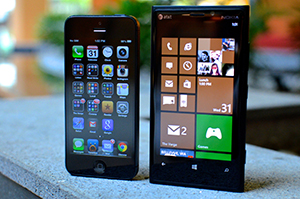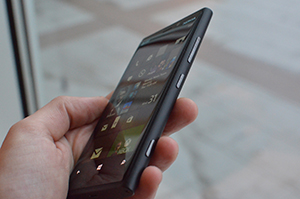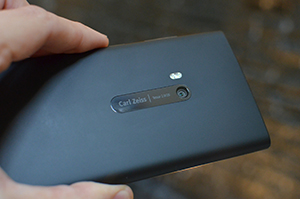Hardware
/ design

t helps that the Lumia
920 has standout industrial design. Like the Lumia 900 and the Lumia 800
before it, it's composed of a polycarbonate unibody shell that wraps all the
way around the device. The top and bottom are flat and squared-off, with the
headphone jack squarely in the top-center and the microUSB jack bottom-center
and flanked by grilles for the speaker and microphone.
The finish on the
polycarbonate shell varies depending on color. The black and cyan models are
elegant and scratch-resistant, though my unit had some minor imperfections with
the finish on the bottom. It also comes in red, white, and yellow, each of
which come with extremely glossy shells that I personally find garish and
off-putting — but some on The Verge staff (with admittedly more refined fashion
sense than I) still liked them.

I'm just going to say
this bluntly: the Nokia Lumia 920 is a tank of a phone. It's a big and heavy
device, weighing in at 185 grams and 10.7mm thick — compare that to the 112
gram, 7.6mm sliver that is the iPhone 5 and you get a sense of how large this
phone is. It also has a relatively capacious 4.5-inch screen with large bezels
on the top and bottom, adding up to a height of just over 5.1 inches. Even if
you only compare it against its Windows Phone counterparts, the HTC Windows
Phone 8X is nearly as thick as the Lumia 920 at its thickest point, but it's
much more tapered and weighs much less.

THE NOKIA LUMIA 920 IS A TANK
There are ostensibly
good reasons for the Lumia 920's weight and size: a large battery, 4.5-inch
screen, wireless charging, and PureView camera hardware all take up plenty of
space. With time, the heft of the phone did eventually start to feel OK. A
generous and charitable person would call it "substantial," and if
you're willing to make the tradeoffs Nokia is proposing here you may even come
to find that substance almost reassuring.

No comments:
Post a Comment